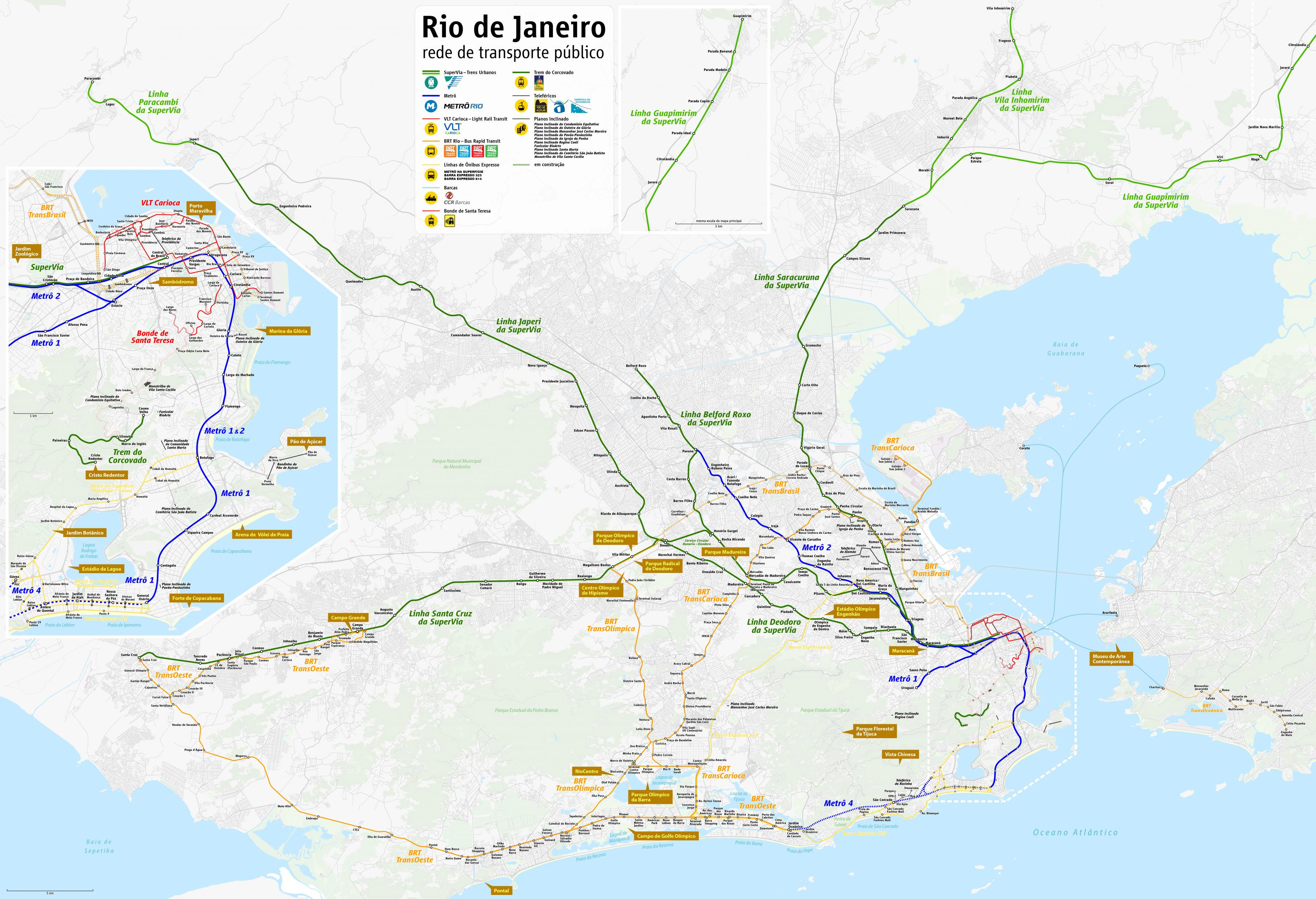Rio de Janeiro Metro Information
The Metro of Rio de Janeiro is a metro system with very humble beginnings. When it started operating in 1979, it served only 5 stations. Now, the system operates on 2 lines spread over a distance of 41 km, with a total of 36 stations. The rapid transit system is simply called the Metro by the locals of Rio. It’s popularity with the locals is not taken lightly. As one of the most popular means of public transport in Rio, it has an annual ridership of over 2 million (2014). In fact, only Sao Paulo’s metro network in Brazil can boast a higher annual ridership. Under the name Rio Trilhos, the government of Rio de Janeiro operates the metro and has been responsible for its expansion since its construction. One of the major expansion projects they are currently pursuing is the extension of Line 2 to reduce the journey time from Pavuna station to Botago.
Rio de Janeiro Metro Map
Map of Rio de Janeiro Metro showing different lines and stations. Click on the map to enlarge it or download the Rio de Janeiro Metro map in PDF format.
Rio de Janeiro Metro Hours
The Metro has two different timetables. One for Monday-Saturday and the other for Sundays and other public holidays. On weekdays and Saturdays, the metro starts at 05:00 in the morning and runs until midnight. Access to the metro is not quite the same on Sundays and public holidays. On these days, trains only run between 07:00 and 23:00.
Rio de Janeiro Metro Fares
The most convenient and popular option is a single ticket, which is charged at a flat rate regardless of the distance. Passengers can travel from one station to another and a new ticket is required if the passenger leaves the station and needs another ticket for another journey. This ticket costs R$ 4.10. The metro system also provides free bus service at some stations as part of the service extension. However, passengers must purchase the Metrô na Superfície card. These cards can also be purchased on board Metrô na Superfície buses.
Pre-paid cards are also available, with an initial cost of R$5 and a minimum recharge of R$5.
The Metro offers a gratuity to certain people. There are a number of criteria to qualify. Some of these include being over 65 years of age, having a disability, etc.
Rio de Janeiro Metro Parking
Some stations offer park and ride facilities for metro passengers.
Rio de Janeiro Metro Rules and Tips
Trains on the Rio de Janeiro metro that are marked orange are reserved for pregnant women, disabled people, babies and the elderly. As an additional safety measure, especially for women, an entire carriage is reserved for women. The Metro system has various facilities throughout its network to make travelling as convenient as possible for local people. From ATM’s to public toilets, the needs of the people are well catered for. Bicycles are allowed on board, but their transport is subject to certain conditions.
Pictures of Rio de Janeiro Metro
Rio de Janeiro Metro Lines
Rio de Janeiro Metro has a very small network with 2 lines. The lines are identified by their colour.
Line 1 – Line 1, which is orange in colour, runs through downtown Rio, the South Zone and the neighbourhoods of the North Zone. It runs from Saens Pena to Ipanema/General Osorio. It was the first line to be built, back in 1979, with all its stations built underground. Line 1 is 18 km long and has 19 stations.
Line 2 – Line 2, which is green in colour, serves the neighbouring areas of Rio and the line extends northwards. The line is completely above ground and runs from Pavuna to Botafogo. It is 24 km long and has a total of 25 stations.
Line 1A is an extension of Line 2, with most stations having island platforms.

